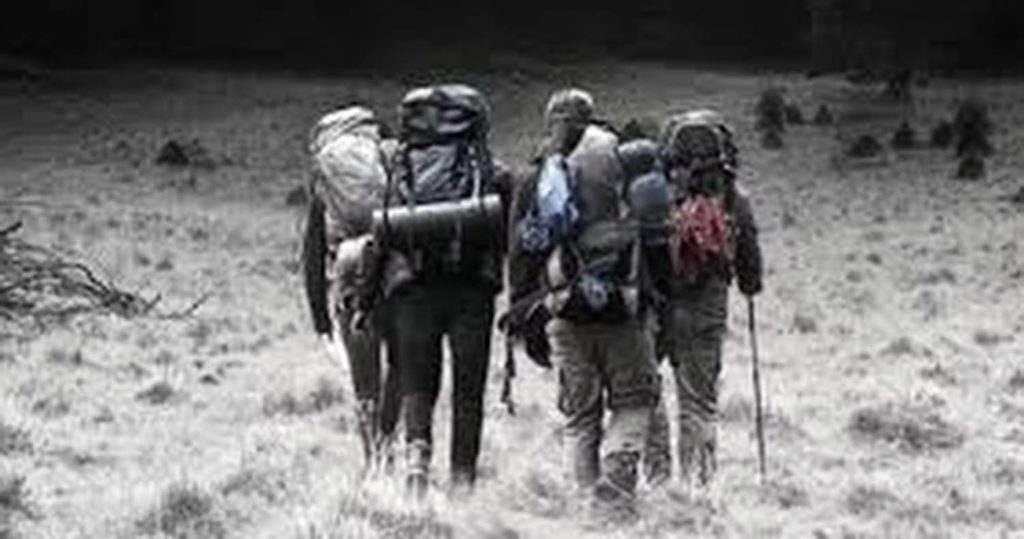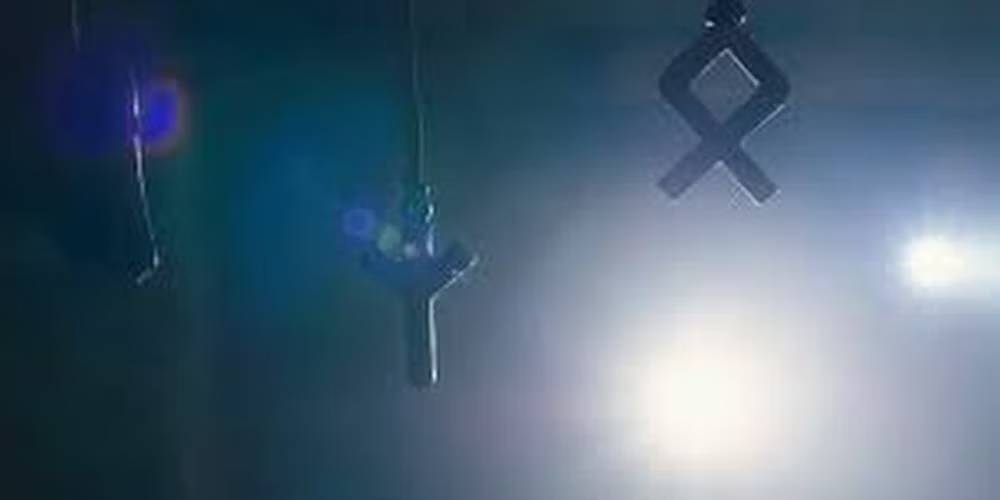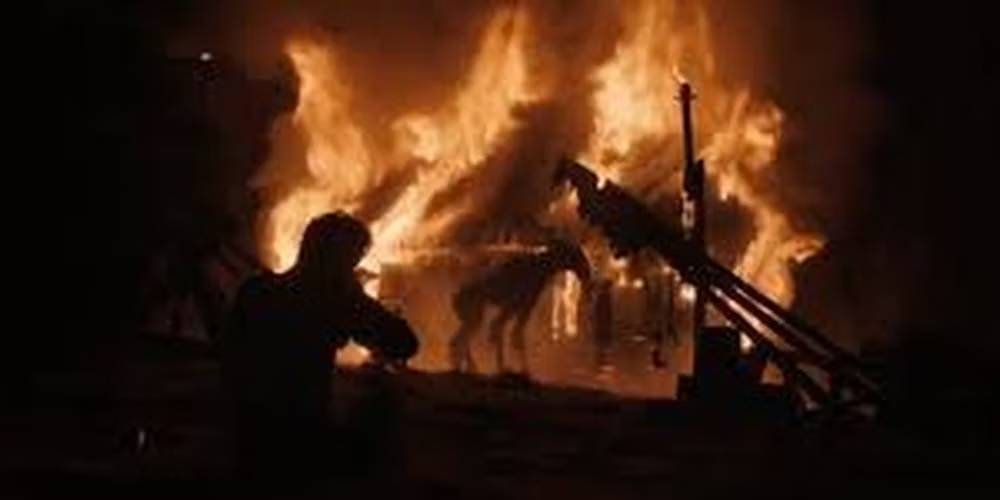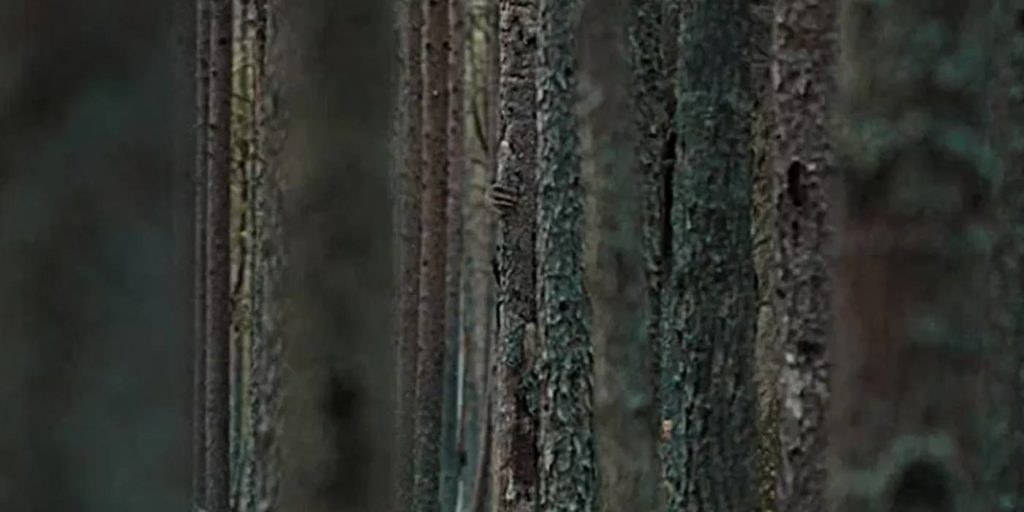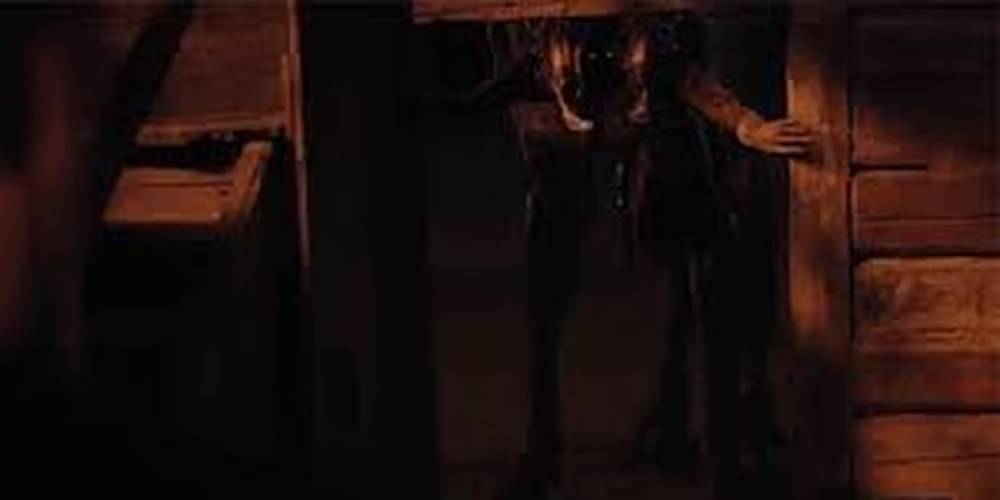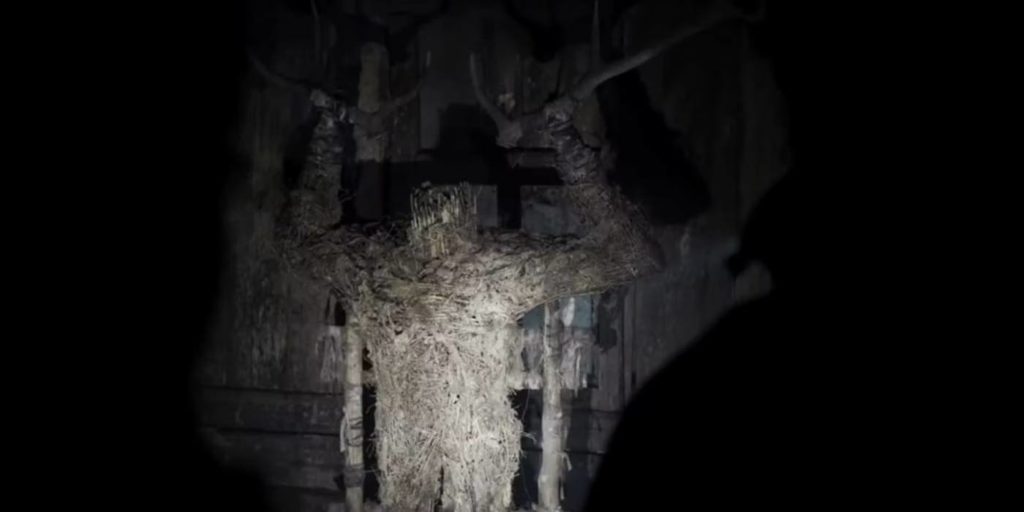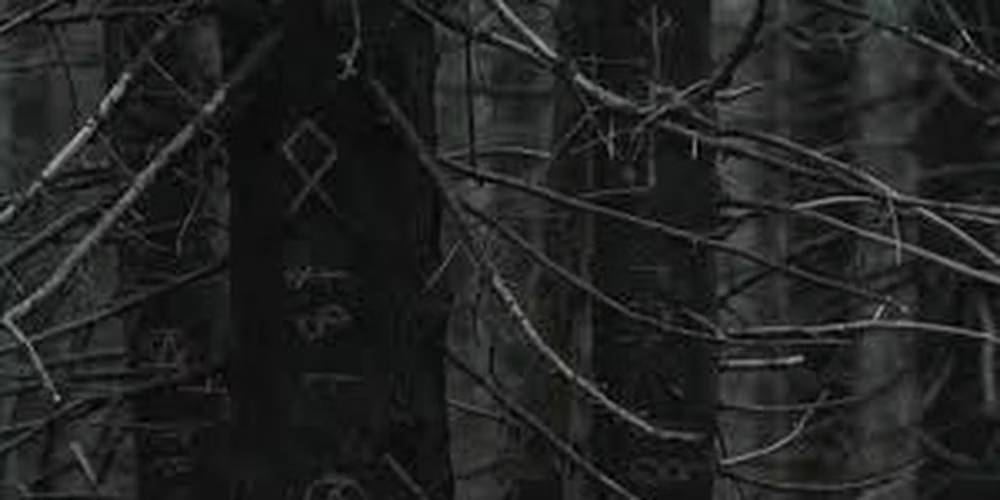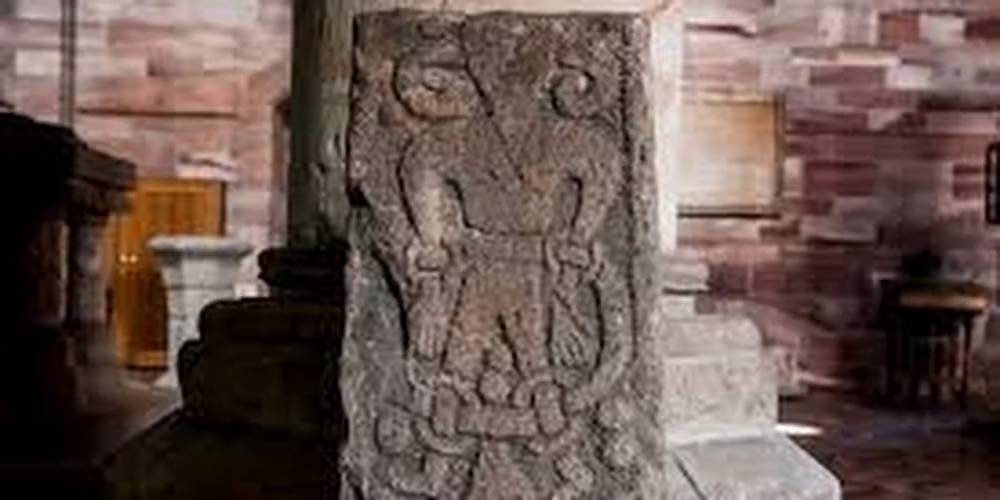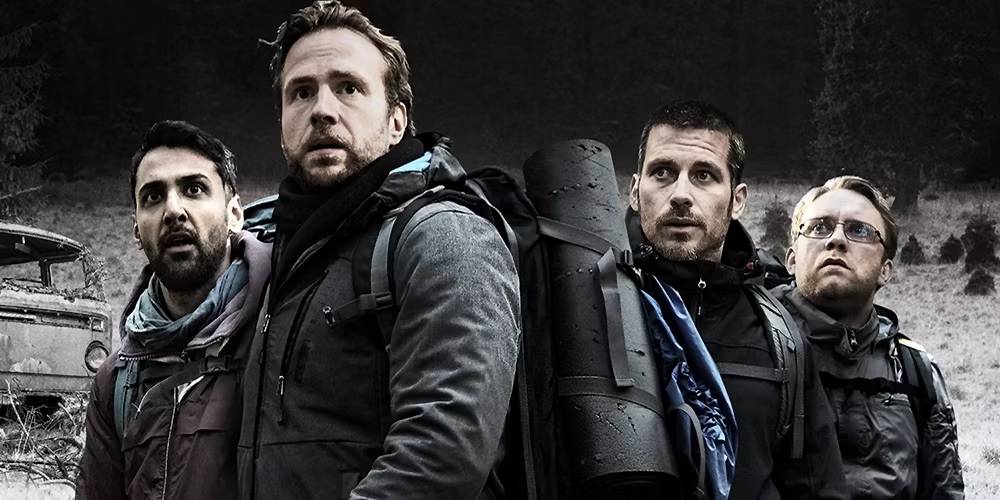Netflix’s sleeper hit of 2018 Four college pals reunite for a hiking excursion into the Swedish forest in the wilderness horror movie The Ritual. The group’s vacation, which was originally meant to remember a buddy who had been brutally murdered six months before, takes a turn for the worst when they regrettably decide to take a shortcut through a somewhat unwelcoming woodland. The pals are tormented by nightmares and horrific images while lost among the seemingly endless rows of trees, and they quickly start to believe they are being pursued by a malicious entity.
The Ritual is a film that gives viewers a lot to ponder after the closing credits have rolled, drawing inspiration from the works of H.P. Lovecraft, The Blair Witch Project, and Norse mythology in equal measure. So let’s begin breaking down the movie. Here are 10 obscure details from The Ritual that you might have overlooked.
Algiz Rune
The Algiz or Elhaz rune is the other rune to appear in the movie. This symbol, which resembles the letter Y somewhat, is usually translated as “elk.”
It may be seen next to the Odal symbol carved into the tree and hanging from the cabin’s ceiling. Later, the villagers use a huge wooden carving of the rune to tie one of the buddies to when they want to sacrifice him to the Jötunn. The villagers choose this symbol for the shape of their sacrificial pole since it is most likely meant to relate to the monster specifically given that it has large antlers and a body that resembles an elk somewhat.
Creature Design
Speaking of the beast, it is a very dreadful design. One of the most terrifying and lasting images from the movie is the nightmare shape, which is a hybrid of an elk and a person, silhouetted against the burning village.
Director David Bruckner enlisted Keith Thompson, a frequent collaborator of Guillermo Del Toro, to design this hideous creature. Prior to this, Thompson served as a concept illustrator for a number of Del Toro movies, including Crimson Peak and Don’t Be Afraid of the Dark. That’s probably why Del Toro aficionados noticed something oddly similar about the hideous fairy tale style of the monster.
Filming Location
The companions are strolling through the Sarek National Park in northern Sweden, according to the map they are using at the start of their hike. The region not only serves as an eerie background for the movie, but it also has a rich past. Around 8,000 years ago, when humanity first began to live there, they believed the mountains to have sacred importance.
At the conclusion of the movie, Luke, who is now the sole survivor of the gang, escapes from the cellar where the villagers had locked him and creeps upstairs with plans to set the house on fire. He discovers a group of the rotting living dead—people who have been granted a nightmare version of eternal life as a result of their devotion of the Jötunn—in the attic. They might even be the final survivors of the region’s first settlers based on how they appear.
Jötunn
Later, one of the villagers reveals to Luke (Rafe Spall), the movie’s main character, that the horrific monster that has been brutally killing his pals is actually Loki’s bastard offspring. She calls it a Jötunn, which some viewers might have disregarded as a made-up term created by the movie’s writers.
In actuality, Norse mythology is where this creature first appeared. These mythical, enigmatic creatures, which resemble trolls and giants, are occasionally described as being beautiful but are more frequently hideous and terrifying.
Method Of Killing
It turns out that Norse myth is even the source of the monster’s approach for killing its victims. The deity of wisdom and knowledge, Odin, offered himself as a sacrifice by impaling himself on his spear in the Yggdrasil cosmic tree. He was able to learn rune magic as a result of his willingness to sacrifice himself.
This symbolism might relate to the title’s ritual. The villagers want to sacrifice Luke to the beast, whom they all revere, at the conclusion of the movie. He will be granted eternal life if he kneels and prays before the Jötunn, who will also remove all of his suffering. But if he doesn’t, he’ll go up in the trees with his companions.
Odal Rune
When the companions find an abandoned cabin in the woods, they first stumble across runes. One of the symbols etched into the adjacent tree boughs is the Odal or Othala rune. The symbol can mean “inherited estate” or even “descent,” according to various translations.
It can imply that the pals had accidentally entered the creature’s land, or it might even allude to the creature’s legendary ancestry. In either case, it is unmistakably a sign of disaster.
Shape-Shifting
One of Loki’s skills that makes him such a master trickster is his capacity to transform into a variety of animals and even other people. And it turns out that the Jötunn shares a few of his father’s abilities.
The villagers and unfortunate human sacrifice Dom (Sam Troughton) wait anxiously for the monster to emerge from the forest in the closing scene of the movie. Dom sees the monster approaching him and tenderly touching his cheek, but instead of taking the shape of the Jötunn, it resembles his wife. Sadly for Dom, the trick doesn’t work for long, as the monster—now returning to its original form—easily drags him up and impales him on a branch of a tree.
The Kirkby Stephen Stone
The two remaining companions run away from the oncoming monster toward the end of the movie and come into a settlement in the middle of the forest. They rush into one of the homes in search of safety and pass out tired on the floor. All we see of the interior of the room in one of the film’s many unnerving shots is the silhouette of an elderly woman kneeling in prayer before a stone that appears to depict a human with stag horns. We can tell right away that this is bad news based on the brief glances we’ve previously gotten of the movie’s monster.
The stone the woman is praying to is actually a rather accurate replica of the Kirkby Stephen or Loki Stone, which is kept in St. Stephen’s Church in the British town of Kirkby Stephen. According to legend, the stone shows the chained and bound Norse god Loki.
The Villagers’ Chant
The village cult can be heard chanting something constantly as they offer up their human sacrifice. Actually, they are using the Norse word “blót,” which is a druidic word for “sacrifice.”
A blót in Nordic paganism included numerous ritualistic components, including feasts with mead and the offering of animals and, occasionally, even humans. People who were present at the ceremony frequently splashed the sacrifice’s blood all over their bodies as a way to fortify themselves for the coming year.
Yes,you guessed it right. It’s The Same Loki
The villager’s mention of Loki would have caught the attention of Marvel enthusiasts. The Norse god that inspired Tom Hiddleston’s portrayal of the supervillain from the Marvel comics is the same mythical character whose bastard son terrorises the group of friends in The Ritual.
Loki is a cunning trickster with a murky relationship to the gods in Norse mythology. In one particularly gory tale, another deity, Váli, binds Loki’s son and imprisons him in the underworld as retaliation for Loki’s involvement in the death of the god Baldr.

